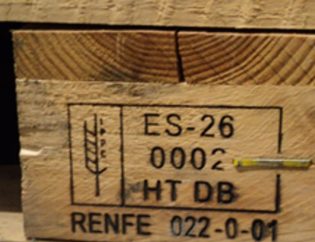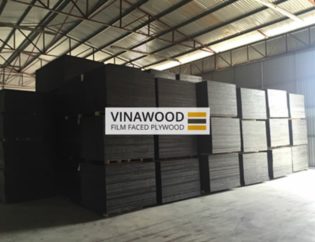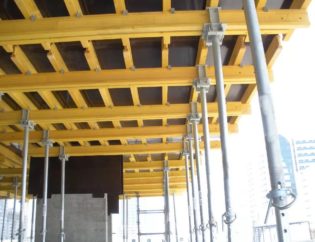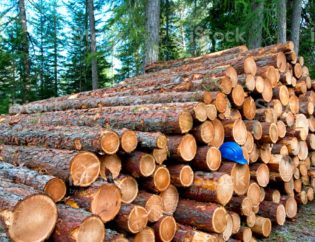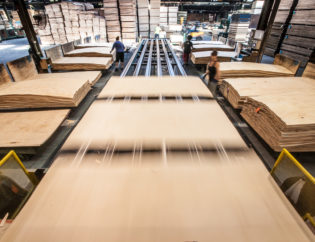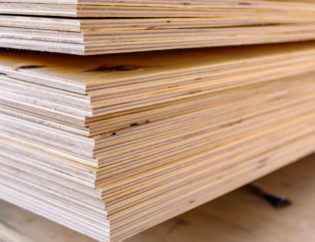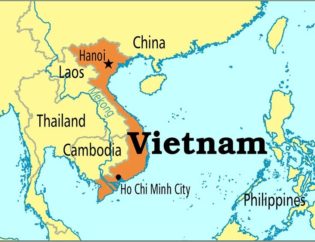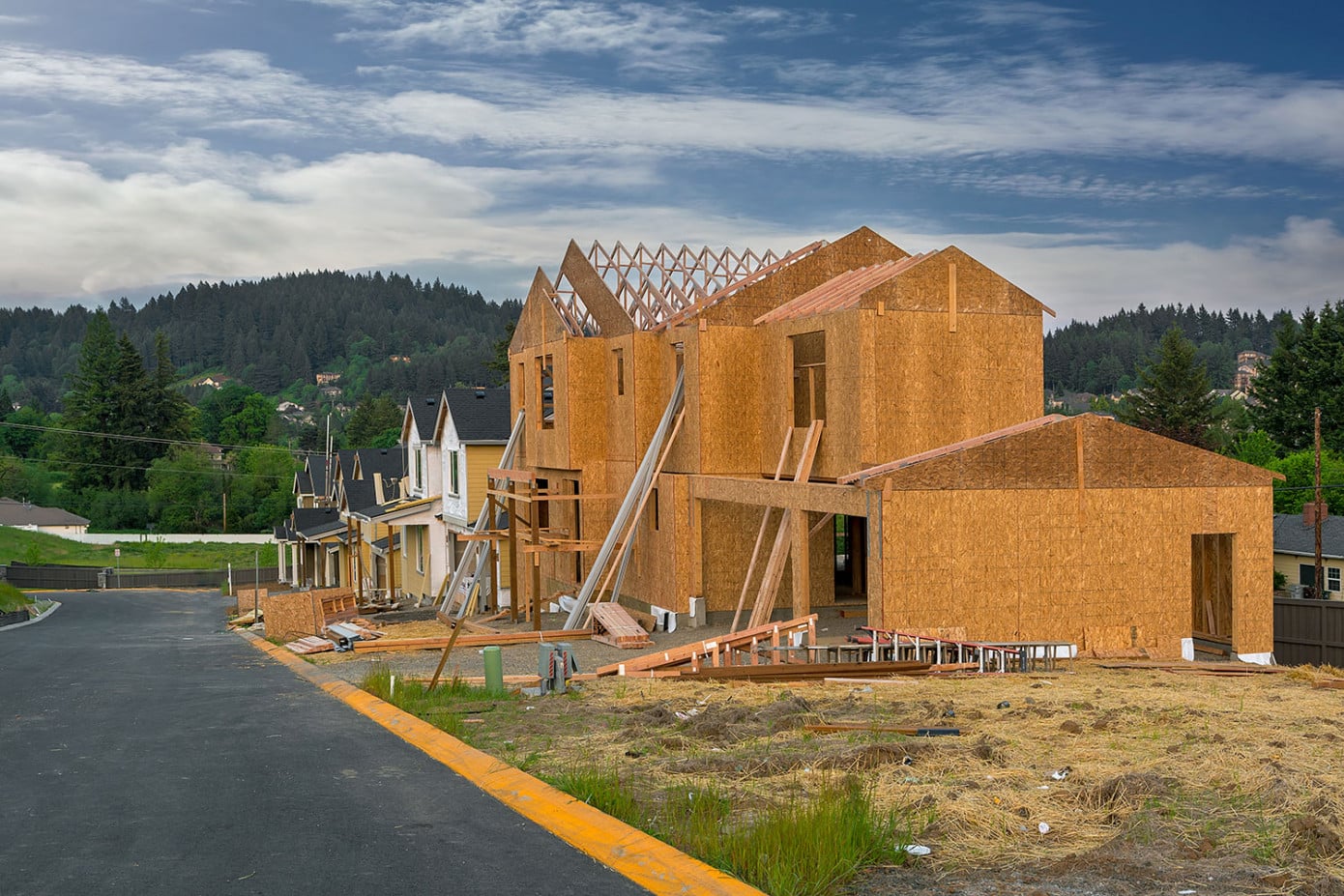
lesprom. – The increase in the lumber price over this year put the value of the U.S. home higher by $40,000, says Keta Kosman, the publisher of Vancouver based Madison’s Lumber Reporter. She forecasts a very strong lumber market and U.S. housing all the way to the end of 2020.
Lesprom Network: The decline in prices for lumber and COVID-19 have negatively impacted the demand for lumber resulting in a reduction in manufacturing capacity in Canada. Has production reached the minimum level and can we expect a return to capacity growth in the near future?
Keta Kosman: The COVID-19 affected Canadian production a lot more powerfully than it did in America. Last year, 2019, was not very good for forestry. At the end of 2019 U.S. housing started to improve and at the beginning of 2020 lumber demand really looked good. When the pandemic came, the Canadian government made restrictions on manufacturing, and everything was closed for approximately 6 weeks. Then rules came in for social distancing, putting barriers and other safety measures for workers, so it took from March till about June, that was when the production reduced a lot. Some sawmills were able to come back more quickly and so the volume of production drops over those months is recovering. We are recovering the V, but it’s still not up yet. That data has a three month lag, so I am waiting to see how it was in August. One important thing is that the social distance and safety restrictions did not affect the forest operators. Since spring sawmills are all very well stocked with logs, the drop in supply was actually due to the reduction in manufacturing of lumber.
I am expecting improvement for July, August, September. We’ll know once the data comes out. It didn’t happen so it’s happening now. And the normal time of the year when people are buying a lot of wood to build U.S. housing is also delayed and is still very strong now. The issue in the U.S. is that because of the people working from home they don’t need to live in the city. There’s numerous people right now in the U.S. buying homes in the suburbs. And the building in the suburbs, in the suburban area, is more single-family housing. And the city has more multi condos and stuff like that and also the homes are bigger. All of these things use wood. The sawmill production that was slowed earlier in the year will continue improving and it normally slows down after Labor Day and definitely after U.S. Thanksgiving but this year will not. So we’re going to have a very strong lumber market and U.S. housing all the way to the end of 2020.
Lesprom Network: How do you forecast the development of residential construction?
Keta Kosman: It looks like an increase of 25%. It is absolutely unbelievable, this has never happened before. In Madison’s we talked to the sawmills every Thursday, that’s where we get the prices that we print on Friday. I have people that have been in this business for forty years, and they have never seen something like this. So I watch the data very closely. U.S. housing starts, U.S. home sales and U.S. house prices are all up unbelievable amounts and it looks like it is definitely not just the one-month increase it is going to be probably for a year. To the point where the U.S. National Association of Home Builders is very strongly petitioning the U.S. government to do something about the lumber price, which is so high right now. The increase in the lumber price over this year put the value of the U.S. home higher by $40,000.
The one-fifth of the cost of building the average North American and European home is a lumber, so for a new home the lumber price is very important. The highest amount of home sales is the existing homes, but when existing home sales rise to the amount that it is now and a price rises it puts pressure on a new home. So in a normal economy people understand housing, people understand owning a home, mortgages all of that kind of stuff, better than they understand the stock market, better than they understand exchange rates.
When times are difficult like now, activity in investing in the home is something people do because they can understand it. It makes sense to them. They know their market in the region where they are and that’s what’s happening right now and it is incredibly strong.
Lesprom Network: Will price for lumber continue to grow?
Keta Kosman: I would say that we have reached the top in the past couple of weeks because the huge volume of timber and lumber comes from British Columbia. And that is also true for the U.S. The Oregon and Washington states, here in the West Coast, are the very large suppliers of logs and lumber. The benchmark price of Western Spruce two-by-four has leveled off at the very high level but has not been increasing for the last 3 weeks and then last week the other high volume product Eastern Spruce, that comes out of New York state decreased, so we called it as correction.
The price of Eastern SPF corrected down last week and the price of Western Spruce state flat. So I think that’s for the time being right now this is the high, and the next few weeks it really depends on what’s happening with U.S. housing. But normally in the season U.S. housing starts to slow down after Labor Day, and also the other thing is lumber prices are so high there are other products that builders can use. They can do steel framing, they can use plastic, or they can use composites. It’s not a monopoly, it’s not the only thing, so the prices it’s a thousand dollars. Builders will delay a project or switch to other materials. What I would say is what we have right now in the past two weeks is the high and whether it stays up or starts to drop that we won’t know until it happens in the next few weeks.
Lesprom Network: The British Columbia government in September raised requirements for wood products to be classified as lumber. How can this affect the production and export of lumber from the province?
Keta Kosman: These latest changes affect mostly log sales and apply mostly to the coast. By way of background, previously the government put in restrictions for log exports, especially for cedar, to encourage the production of lumber domestically, so there would be more work for Canadian sawmills. Some companies found a way to export cedar and hemlock logs, if they just squared the log. This new rule legislates the size restrictions for export, so squared logs can not be exported or else there is a fee – an export tax – applied to that log sale.
It’s complicated because a few things are happening at the same time. In February the government changed the timber pricing policy for the Interior, to bring the stumpage rates closer to the market price. BC Timber Sales now sets the stumpage based on lumber prices for the previous month (BCTS is a provincial government agency housed within the Ministry of Forests, Lands, Natural Resource Operations and Rural Development. BCTS plans and designs logging operations – Editorial).
Historically, in the 1950s-70s, when BC made the budget for the year, they set the stumpage based on how much money they needed. Around 1980 the U.S. Lumber Coalition said, and they still say now, that this method of pricing timber is a manipulation by the government, and that the BC forest industry is subsidized. That is why we have a softwood lumber duty on lumber exports to the U.S. This latest change in 2020 to the timber pricing policy in BC, is an attempt to satisfy the U.S. sawmill industry and the Lumber Coalition, in that timber pricing in BC is market based, and is not manipulated by the government.
Lesprom Network: How effective could be a new system for determining the price of timber in British Columbia?
Keta Kosman: Well, I support open markets. The thing is that Canada has the trees and the U.S. has the people, so the U.S. by itself doesn’t manufacture enough lumber for all of the home building, for all the wood needs they have, Canada does not have enough people to build homes for all the wood we make.
I support transparency, I support data, that’s what Madison’s does: lumber price data. I support a system where everybody can understand the mechanics, that makes sense economically. How is this resource, that value that we have in BC, priced. I support open market, transparency, and we are moving closer to that. In the past it was difficult to get the real price that was paid for logs at harvest. Countries like the U.S., Japan, Germany, you can easily see how much timber was harvested, what was paid, how much value, where it goes, all of that kind of stuff.
Lesprom Network: Recently, the WTO commission supported Canada’s position in a trade dispute with the United States. How do you see the further development of the situation?
Keta Kosman: It is a very complicated legal situation and the two avenues to resolve that are NAFTA, now the “new NAFTA”, and the WTO. Frankly it doesn’t really matter what the WTO says because there is no enforcement. So the ruling is a boost to the Canadian industry, to say Canada is not dumping, the government is not helping industry. But the U.S. doesn’t have to change anything, there is no enforcement. As an aside, much more interesting than the WTO decision, earlier this year the U.S. Commerce Department issued an Administrative Review.
The Administrative Review ruled that the duties against almost all the Canadian companies were too high, for the past almost two years, when Canadian companies were paying between 20-25% on the price of the lumber exported to the U.S. The Commerce Department ruling in February, which was supposed to take effect in June, reduced that duty to around 5% per every company except Resolute Forest Products. So the Administrative Review has more power than the WTO because it is in fact a reduction in the amount of the tariff in the paperwork at the border. It was supposed to take effect in June then was delayed to September and now is delayed to October. Canadian companies will be able to apply for a reimbursement of the duties they paid above that new 5% rate.
Lesprom Network: What are the main challenges facing Canadian lumber companies?
Keta Kosman: The 50% of the timber harvest and the lumber production is in British Columbia. The rest of Canada does the other 50%, a large proportion of that is Quebec. The problem was in the past with the mountain pine beetle and the devastation of forests. Over the last 20-25 years, we have reached the end of any product segment from those dead trees and we are now in the cycle of replanting and regeneration. In British Columbia, most of its production comes from pine, which matures after 80 years, so wood supply in British Columbia is projected to decline over the next 80 years.
The problem for supply is to find a way to use that wood that you can’t make two-by-four. There are new products, engineered Cross Laminated Timber, a second-generation material that can be made from smaller trees or different hardwood trees. This kind of thing has a huge demonstration in Asia, Japan, even in the US and Canada, definitely in Europe, but is even with that is not going to make up the volume of a basic two-by-four but however the value is higher so these products will be sold for a lot more money.
Lesprom Network: What are the benefits for sawmills to switch from plain lumber to Cross Laminated Timber?
Keta Kosman: Cross Laminated Timber is a huge benefit, so it literally comes down to application. It is called Mass Timber, LVL, LSL, all of these different products. You can build ten stories, twenty-story buildings in three days, it’s remarkable. So they have that in London, Germany is doing this a lot and Netherlands, and Canada and the U.S. also. The manufacturing is more complicated. You take the timber, and you peel it into large sheets and use a resin like a glue to attach the layers, and the layers can be thick for as deep as you want. Then the material is cut to size, so in the building project the builders just have to put it together. This very excellent modern new technology is fire resistant. It is stronger than steel, it lasts for a very long time, a hundred years. And it uses a resource that is removable, sustainable.
CLT is more expensive, it is more complicated to make. There are not that many plants, so it is still a smaller niche. But it’s coming, especially in Japan, South Korea, and in Europe. The plus is that you can use a wider range of material, the timber. To make a two-by-ten, to make a lumber that is twenty feet long you need a tall straight tree. So that is what I mean about the large. Here in British Columbia, it takes eighty years to grow into a large pine tree. For cross-laminated, for all of this other engineered wood, you can use the smaller tree, you can use the tree that may not be perfectly straight, to make something that is bigger than a two-by-ten and a longer than 20 feet. The supply demand is not as easy to know. But as the future comes, and more products are made, and more products are used we will have data on how much construction is using it, and I’m absolutely certain it will be increased.
Lesprom Network: How does Canadian sawmills deal with wood waste?
Keta Kosman: It is used to go to the pulp and paper mills. 20-30 years ago, unfortunately, it got wasted and was burned. You say the sawmill waste that is what it used to be called. Then it became called sawmill residue, because it was going to the pulp mills. Very loosely speaking, sawmills in BC can make $80 for a metric ton of their chips and their sawdust. So it was called wood residue and now it’s called feedstock. It doesn’t go to the pulp mills anymore because technology improved in the Southern Hemisphere, and most specifically in Brazil, and they were able to make good quality pulp using 40% of the eucalyptus and then some softwood and some recycled pulp. And the pulp mills in Canada of the U.S. and Europe closed because they could not compete. But now it goes to the pellet mill, absolutely. So pellet manufacturing is a growing industry.
It’s two kinds of pellets.The industrial pellet that goes to energy plants or some kind of manufacturing that uses a lot of energy. And what is called a commercial or residential pellet. For example, if someone has a pellet burner in their house to replace their electric heat. The industrial pellets are bigger and they use the bark and other material. The commercial residential pellets are smaller, and they don’t use the bark. The manufacturing in North America is approximately fifty-fifty Industrial and commercial residential, the production in the U.S. is approximately fifty-fifty consumed in the U.S. and exports, and the production in Canada is almost entirely exported.
Lesprom Network: How do you assess the development of the forest sector in Canada and North America?
Keta Kosman: It has moved forward with technology. There was some resistance at the beginning for example to upgrade a sawmill or to put in a cross-laminated. There was some resistance, in the beginning, to switch from pulp mill to pellet mill. But now when the industry can see that it’s working, and they can see that use of the residual is greatly improved. So for pellets unlike pulp, is that you can use the forest residual as well. So the branches and all of these things that in the past just piled up at the logging site, and they didn’t really have any purpose for it, now can be ground and also make the pellets. As well as the sawmill that dried sawdust and chips. So it’s kind of a situation where at first people were like ‘Oh, that sounds like a nice theory’! Universities were making experiments, and they were very successful. And then it scaled up and it was put into place in the industry and people start seeing it works, and then they start to do it themselves.
For example, here in Vancouver in New Westminster is a very large Kruger tissue plant, they took a risk and put in two large burners for pellets. They have one pellet burner going, so they did not need to buy power from BC Hydro (the BC Hydro and Power Authority is a Canadian electric utility in the province of British Columbia – Editorial). And since then, it was so successful they have fired the second. They use pellets for the power to make their pulp. Other companies start seeing this success. They started doing it too and that was happening, it is definitely going to grow a lot.
Lesprom Network: How are Canadian forests affected by wildfires?
Keta Kosman: Terrible, terrible. It was mostly in British Columbia and it was mostly the pine beetle. The difference between Canada and the U.S. is that U.S. timber supply comes from private land, private timber owners. And private timber owners, by the way, are the ones who fund and keep that softwood lumber duty going. The U.S. Forest Service’s land does not provide timber for lumber manufacturing. In Canada there is no really private timber owner, there are all government’s. So the timber management practice in Canada and in the U.S. public land is different.
However, when the pine beetle came into Canada and Northern U.S. states because of the rain that we were harvesting and replanting back in the 50s-80s. The forest management that we had caused the forest to be weaker to infestation because is a model culture. With just lodgepole pine, all of a similar age, which just makes it very sensible, it is not a natural forest. The natural forest has trees of different kinds and fire cannot just brace through, it has the barrier. So because of the way that we managed the forest in decades ago and because the pine beetle came, the fire is very dangerous because a lot of the forest is dead.
What the beetle does is the depletion of tree resin, which means the moisture content drops. The normal tree has about 45% of moisture and the dead tree from the pine beetle is like 14%, which is the same moisture content as lumber. So the entire forest that was killed by the beetle is similar to the log that you’re throwing in your fire in your fireplace.
In Canada, there are a lot of forests and not that many people, so when a fire comes it burns the forest but it does not really Infrastructure, that is not really roads and towns. In the U.S. there so many people live in nature, they build in the forest, so when the fire comes if burned houses, it burns stores. It’s a much different situation, but this is the reality that we are in.
If there is a fire anywhere in Canada or the U.S. is going to be bad and is not really the way to stop. In California right now to make a firebreak actually burn out like a mile or a kilometer space so that the fire can’t keep going. It is really only defence. So it’s a huge loss. The fire in the U.S. this year right now is almost internally on public land, it doesn’t affect the timber supply to the sawmills, but it does affect demand for future building, cause people just build again.
Lesprom Network: Are there wood construction technologies that protect against fire?
Keta Kosman: What happens if fire comes to a mass timber building, it just gets charred, it doesn’t burn. But for a house, the defence is to clear the land, to not provide fuel. The entire acre around the house should have no trees, no leaves on the ground, no branches.
Keta Kosman is a publisher of Vancouver based Madison’s Lumber Reporter. Since 1952, the Madison’s Lumber Reporter is the premiere source for North American softwood lumber news, prices, industry insight, and industry contacts. The weekly Madison’s Lumber Reporter publishes current Canadian and U.S. construction framing dimension lumber and panel wholesaler pricing information on 450 individual softwood lumber commodity items. Apart from actual forest industry players, readers include governments, universities, economists, home builders, lumber retailers, and much more.
Vietnam Plywood
Vietnam Film Faced Plywood


